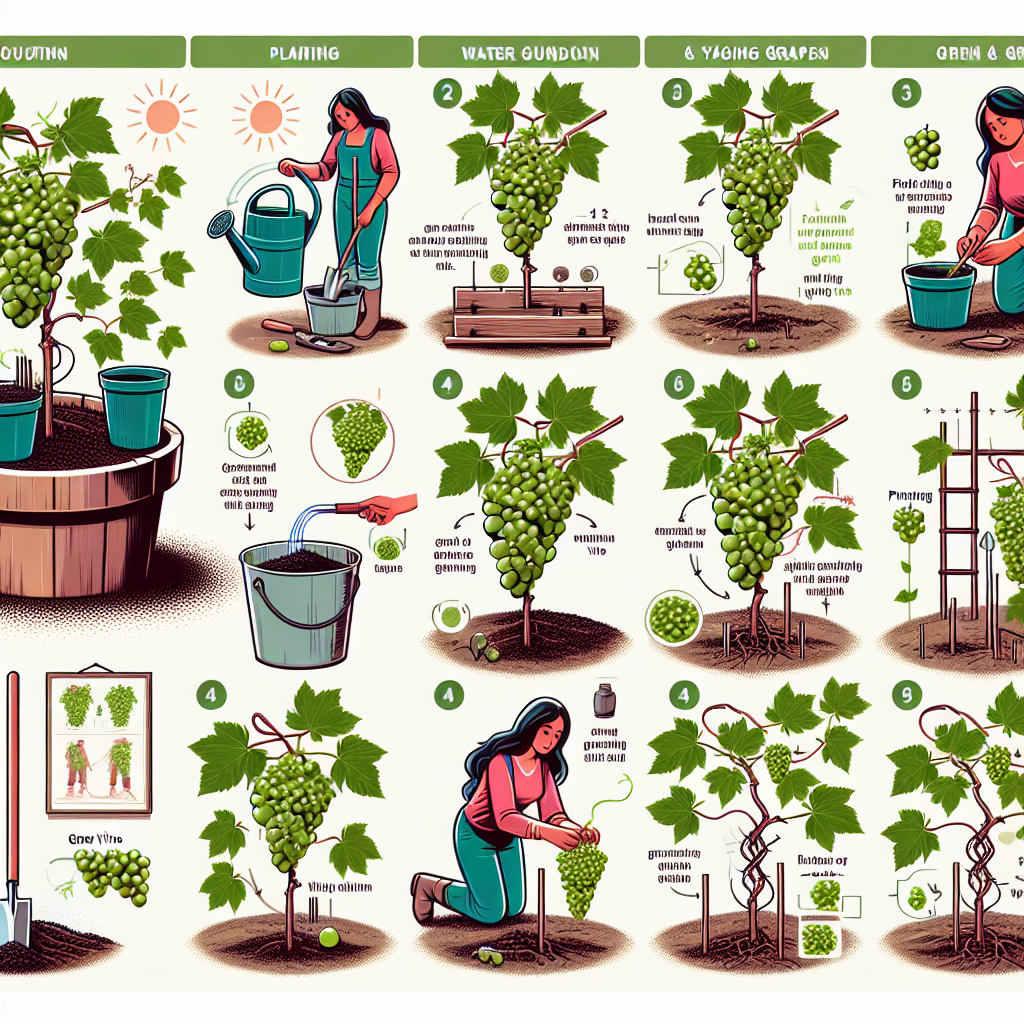
How to grow green grapes at home
How to Grow Green Grapes at Home: A Comprehensive Guide
Growing your own fruit can be a rewarding and tasty endeavor, especially when it comes to cultivating green grapes. Whether you're hoping to enjoy the fruits of your labor fresh off the vine or want to make homemade wine, learning how to grow green grapes at home can be an enriching experience. In this guide, we will take you through everything you need to know about successfully growing green grapes right in your backyard.
Understanding Green Grapes
Green grapes are not a specific variety but rather refer to various types of grapes that are green upon ripening. They can be enjoyed fresh, dried into raisins, or fermented into wine. The most common varieties include Thompson Seedless, Candice, and Calmeria. Understanding the characteristics of these grapes can help enhance your gardening experience and harvest.
Choosing the Right Grape Variety
When selecting a grape variety, you will want to consider the climate and growing conditions in your region. Here are some popular varieties of green grapes:
- Thompson Seedless: A popular and versatile grape known for its sweet flavor and crisp texture.
- Calmeria: Often used for fresh eating; this variety is sweet and has a thin skin.
- Canadice: This grape has a musky flavor and is resistant to many diseases, making it easier to grow.
Choose a variety that fits your local climate, and check with your local garden center for the most suitable options.
Ideal Growing Conditions
To ensure your grapevines thrive, it’s crucial to provide the right growing conditions. Here are the key factors to consider:
- Sunlight: Grapevines require full sun, ideally 6-8 hours a day.
- Soil: Well-draining soil with a pH level of 6.0 to 6.8 is ideal.
- Space: Provide enough space for growth; plant vines 6 to 8 feet apart.
Before planting, it might be helpful to test your soil to ensure its nutrient and pH levels are optimal for grape growing.
Steps to Grow Green Grapes at Home
Now that you understand the essentials of green grapes, let's delve into the step-by-step process of growing them at home.
- Preparation: Start by selecting a sunny location and preparing the soil. Make sure to remove any weeds or grass.
- Soil Amendments: Mix in compost or aged manure to enrich the soil and improve drainage.
- Planting the Vines: Dig holes for each vine, ensuring they are deep enough to accommodate the roots. Place the vines in the holes and cover them with soil.
- Watering: Water the newly planted vines thoroughly. Maintain consistent moisture, especially during the first growing season.
- Fertilizing: Apply a balanced fertilizer in early spring to promote healthy plant growth.
- Pruning: After the first year, prune your vines each winter to encourage new growth and fruit production.
- Pest and Disease Management: Keep an eye on your vines for pests and diseases, treating them promptly if necessary.
Watering and Maintenance Tips
Maintaining proper moisture levels is crucial for the health of your grapevines. Here are some tips for watering your green grapes:
- Water your vines deeply to encourage deep root growth.
- Use mulch around the base to retain moisture and suppress weeds.
- Avoid overhead watering to minimize the risk of mold and mildew.
Pruning Techniques for Grapevines
Pruning is essential in keeping your grapevines healthy and productive. Here’s how you can approach it:
- During the winter months, remove dead or weak wood.
- Focus on cutting back last year’s growth to about 60% to encourage new growth.
- Maintain an open canopy to allow sunlight to penetrate and ripen the grapes.
"Proper pruning is the key to a fruitful grapevine." - Gardening Expert
Pest and Disease Management
Even the best practices can sometimes fall prey to pests and diseases. Here’s how to manage them:
- Common Pests: Watch out for aphids, spider mites, and grape phylloxera. Utilize insecticidal soap or horticultural oils for control.
- Diseases: Fungal diseases like powdery mildew and downy mildew can affect grapevines. Ensure good air circulation and promptly treat infected areas with fungicides.
Harvesting Green Grapes
Knowing when to harvest is essential for ensuring the optimal flavor of your grapes. Here's what you need to look for:
- The grapes should feel firm and be plump.
- Check the sugar levels; ideally, grapes should have a high sugar content and a balanced acidity.
- Grapes typically ripen in late summer to early fall, depending on the variety and local climate.
The best way to harvest grapes is by cutting the clusters from the vine using sharp scissors or shears. Always wear gloves to protect your hands from any possible irritants.
Storing Your Harvest
Now that you've harvested your green grapes, proper storage is critical to maintaining their freshness:
- Keep grapes in a cool, dry place and ideally, refrigerate them after harvesting.
- Use perforated plastic bags to maintain humidity while preventing excess moisture.
- Avoid washing grapes until you're ready to eat them to prevent spoilage.
Conclusion
Growing your own green grapes at home can be a fulfilling hobby, from planting the vines to enjoying the final harvest. By understanding the conditions and care required, you can develop a flourishing grape vineyard right in your garden.
Remember to choose the right grape variety for your region, provide optimal growing conditions, and use proper maintenance techniques to protect your plants from pests and diseases. With patience and dedication, you'll be able to grow juicy green grapes that you can savor in many delicious ways!
By Guest, Published on October 15th, 2024